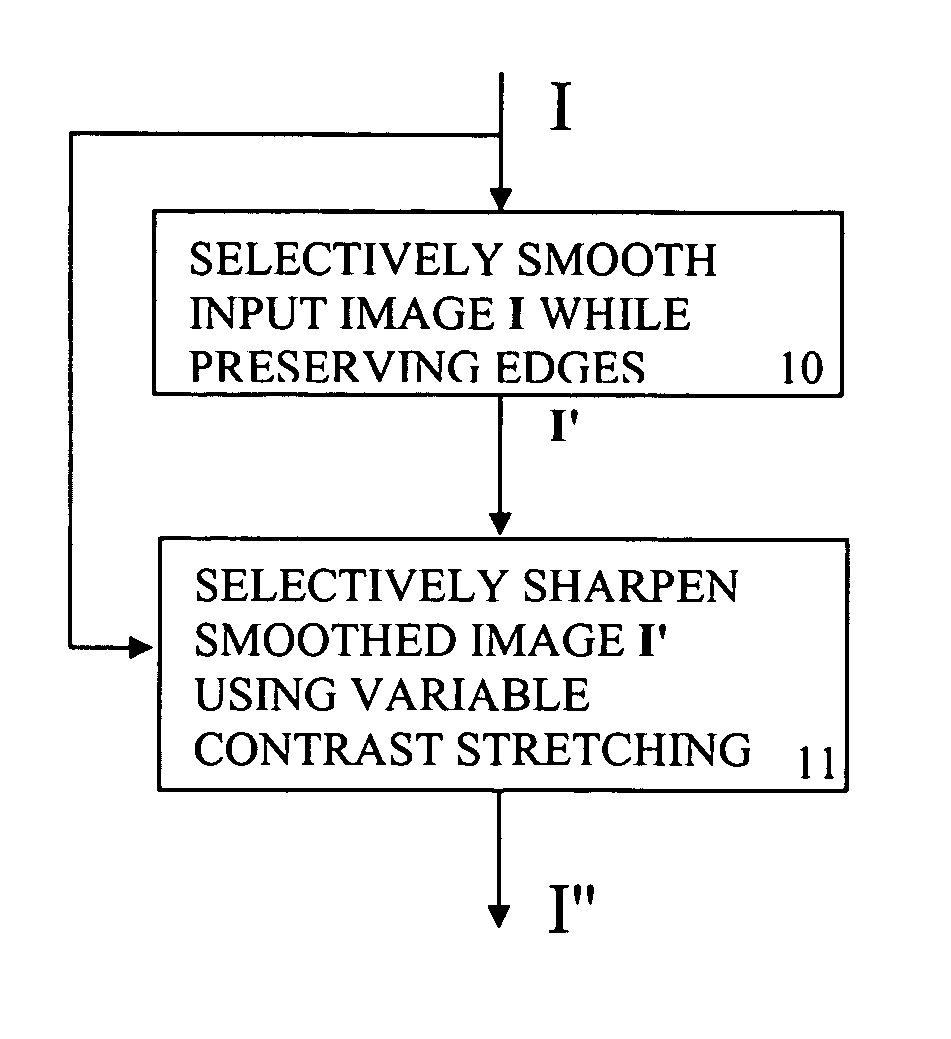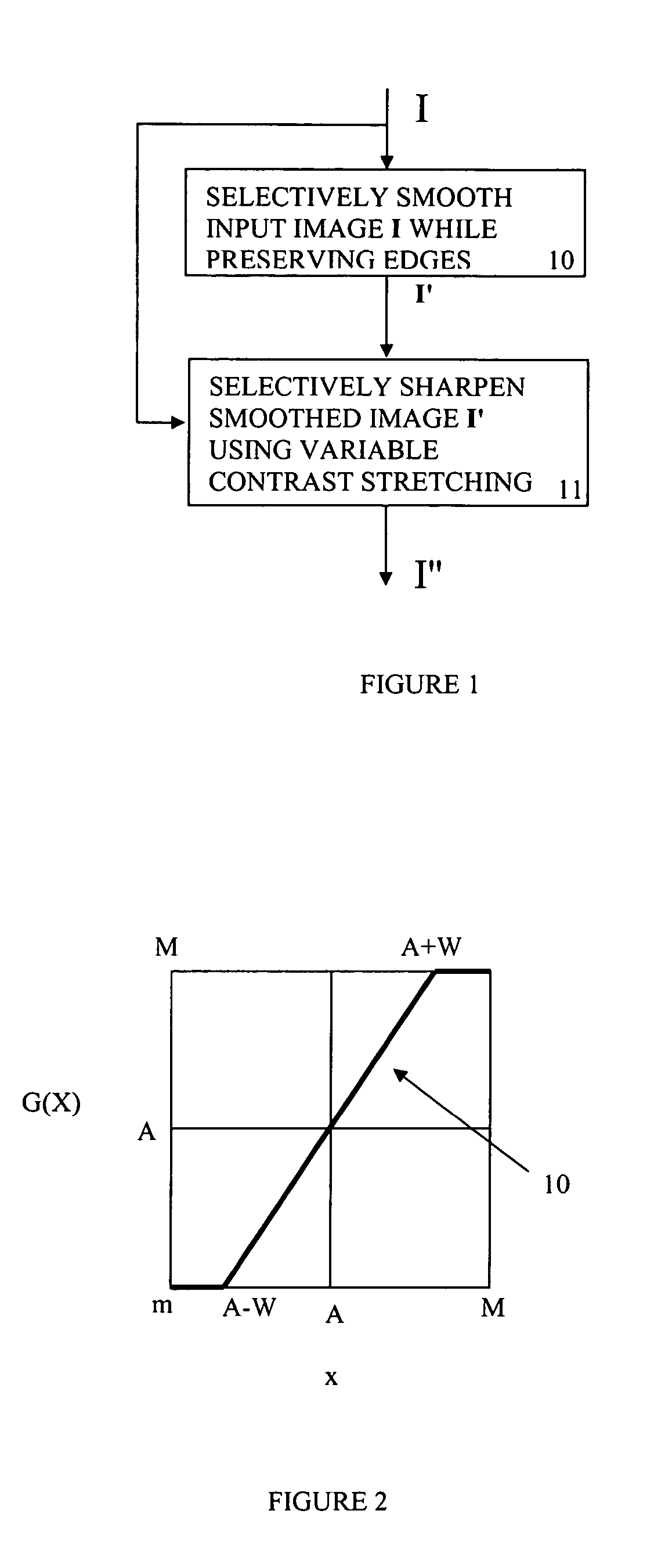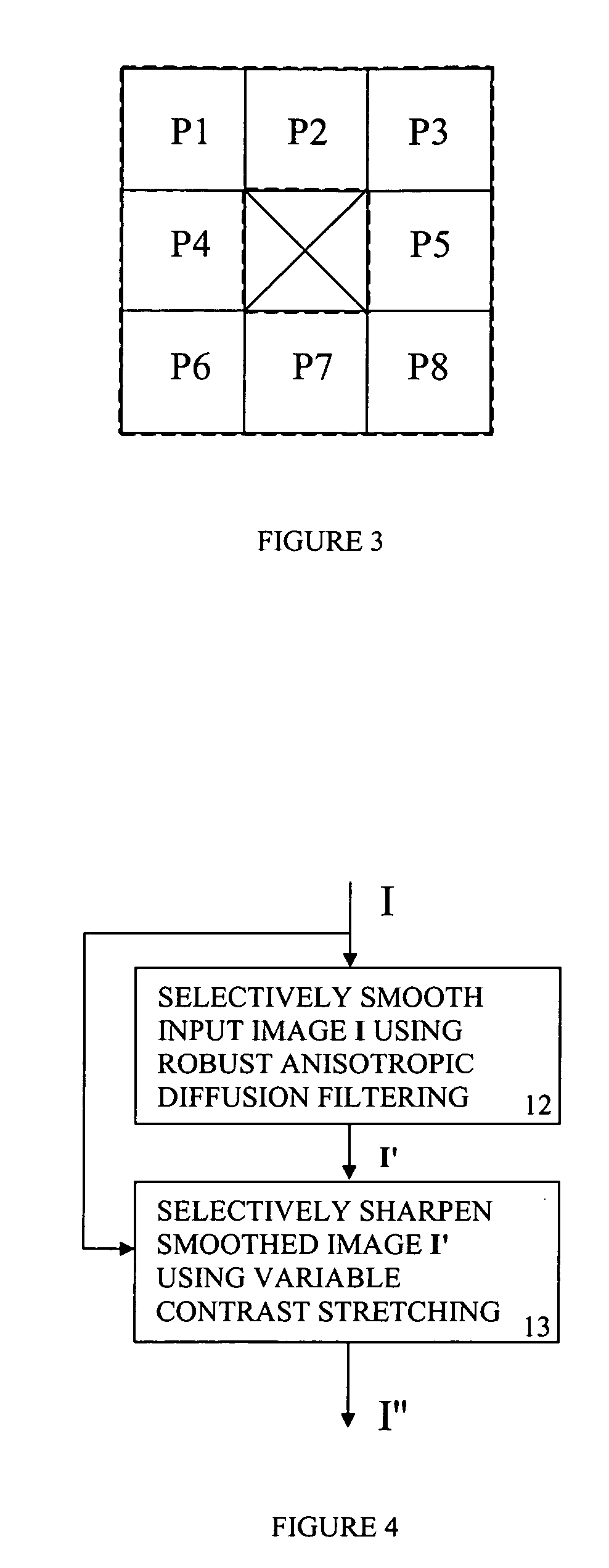Method for enhancing compressibility and visual quality of scanned document images
a document image and compressibility technology, applied in the field of image data processing, can solve the problems of unsatisfactory smooth edges, unfavorable smooth edges, and less effective removal of high amplitude noise such as speckle noise, and achieve the effect of increasing the compressibility of data and enhancing image data
- Summary
- Abstract
- Description
- Claims
- Application Information
AI Technical Summary
Benefits of technology
Problems solved by technology
Method used
Image
Examples
first embodiment
One of the advantages of the method of image processing shown in FIG. 1 is that the step of selectively smoothing is effective in removing most noise types including Gaussian-type noise but is ineffective in removing speckle-type noise (e.g., white dots on black or black dots on white) since speckles often appear as edges to selective smoothing filters, while the selective sharpening step using variable contrast stretching is effective in removing the speckle-type noise. As a result, the system and method of image processing removes a significant amount of noise from the image.
Removal of noise from image data allows for increased compressibility of the image-data. Accordingly, one application of the image processing method of the present invention is the pre-processing of image data according to the methods shown in FIGS. 1 and 4 prior to compressing the image data.
It should be noted that the effectiveness of the noise removal is dependent on what type of selective smoothing is p...
PUM
 Login to View More
Login to View More Abstract
Description
Claims
Application Information
 Login to View More
Login to View More - R&D
- Intellectual Property
- Life Sciences
- Materials
- Tech Scout
- Unparalleled Data Quality
- Higher Quality Content
- 60% Fewer Hallucinations
Browse by: Latest US Patents, China's latest patents, Technical Efficacy Thesaurus, Application Domain, Technology Topic, Popular Technical Reports.
© 2025 PatSnap. All rights reserved.Legal|Privacy policy|Modern Slavery Act Transparency Statement|Sitemap|About US| Contact US: help@patsnap.com



